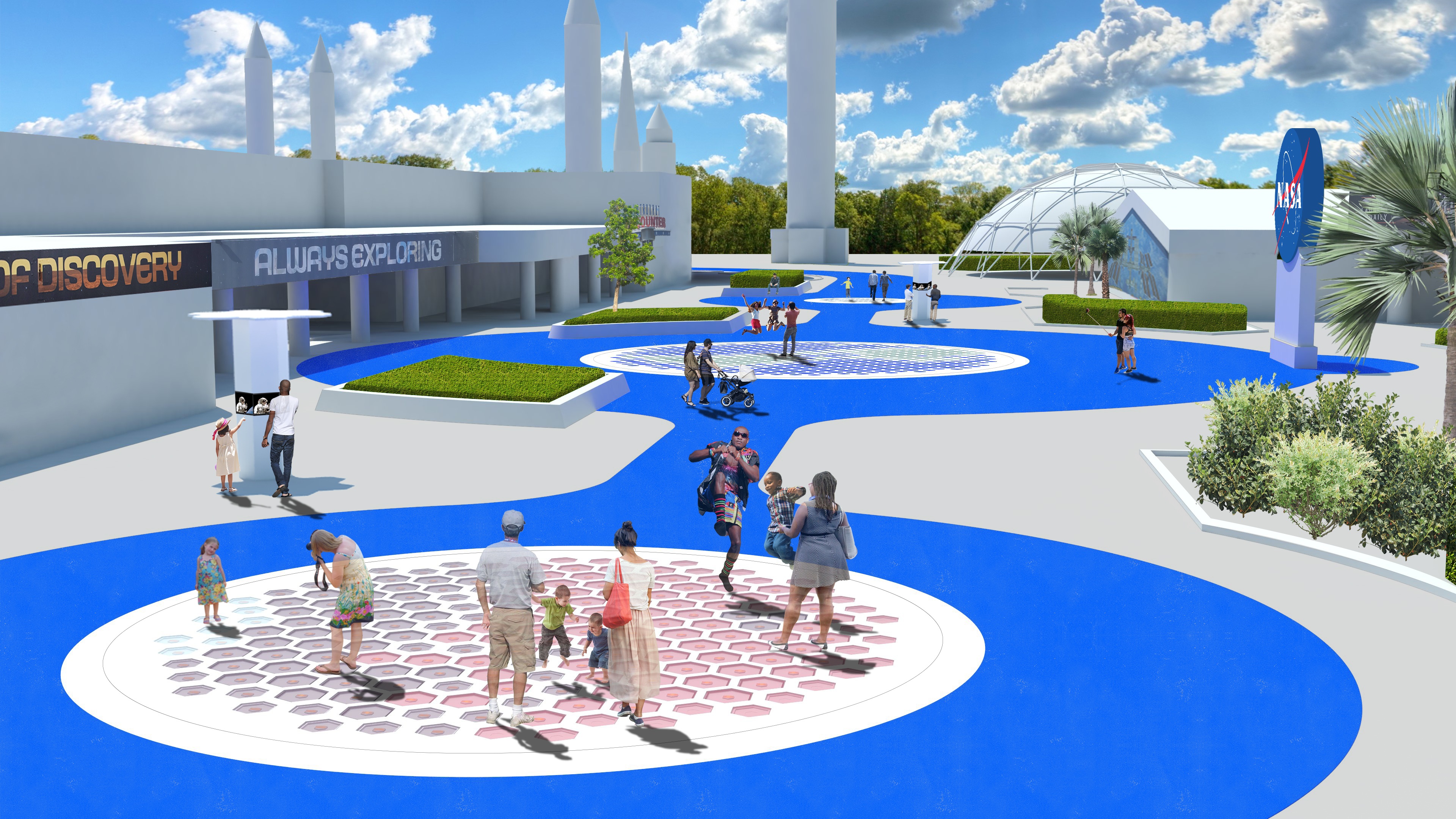
•Complimentary
Join New York’s premiere presentation on energy-and data-harvesting piezoelectric applications for architecture and explore exciting ways plant-based materials contribute to sustainable design. Architects can earn four continuing education credits at the Architects Go Sustainable with BioMaterials Day and see the cutting-edge marriage of Georgia Tech Research Institute’s piezoelectric technology with soy-biobased flooring. All training is available at no cost to architects through support of the United Soybean Board and presenters. Registration is required and attendance is limited to the first 80 registrants.
Ready to use, rapidly renewable, reduced environmental impacts are three of the many attributes of plant-based materials, including those made with U.S.-grown soybeans. This event offers insight into how biobased materials are already contributing to private and public-sector architectural projects from Hilton properties to the Rockefeller Center to new Wall Street construction. Federal government contracts are required to specify products under the Federal BioPreferred® Program that Congress established and is supported by Federal Sustainability Executive Order 13693 “Planning for Federal Sustainability in the Next Decade."
Attendees will also learn how nature is inspiring the design of plant-based products as well as reducing the petroleum and harsh chemicals inside. Find out how mussels grip rocks in the Pacific Ocean led to groundbreaking research based on the principals of biomimicry to cut formaldehyde in wood products. Hear how Yellowstone National Park’s plastic bottles left by 3 million annual visitors are no longer shipped abroad but found a new purpose alongside soybean oil in the backing systems for carpet and artificial grass.
8:30 am
9:00 am
Presented by Richard Poindexter Columbia Forest Products Specialty Products Manager
This course will better inform the architect and designer about decorative hardwood plywood in terms of its manufacture, uses, types and sustainable attributes. The architect and the designer will gain an understanding of the different adhesives and core material options available, which options are more sustainable, and which options are most commonly used. Participants will also know what to look for in order to successfully specify decorative hardwood plywood and how the material can contribute to Leadership in Energy & Environmental Design (LEED) & Living Building Challenge projects.
10:30 am
Presented by Grant Ostvig Demilec East Coast Regional Manager
Participants of this course will learn about the types of polyurethane spray foams in the market including how they compare to traditional insulation products and how they are used to create more efficient structures. After completion of this course, participants will be able to compare and contrast open cell and closed cell spray foam insulation, discuss the impact of spray foam insulation on moisture control, indoor air quality, sound attenuation, the proliferation of molds and mildew and overall comfort of buildings as well as discuss the basic building science impact of spray foam insulation on a building’s energy performance and HVAC sizing. Participants will be able to discuss the building code requirements for foam plastics and create advanced building designs using both open cell and closed cell spray foam insulation.
12:00-1:30 pm
Signature Accord Vice President John McIntosh (Introduction)
Georgia Tech Research Institute (GTRI) Principal Research Scientist Kevin Caravati (Introduction)
Georgia Tech Research Engineer and Architect Paula Gomez-Zamora, Ph.D.
Building Types: Hospitality, Healthcare, Retail
Smart Buildings Post-occupancy Analytics:
Potentials and Goals: Understanding Spatiotemporal Occupancy in Buildings
- Layout Optimization for Design iterations
- Organizational Performance Optimization
- Building Performance Outcomes (i.e. Healthcare: Isovist)
- Real Building Energy Consumption Based on Occupancy
Georgia Tech Senior Research Scientist Ilan Stern, Ph.D.
Smart and Sustainable Projects' components
- Piezoelectrics: What is it and what is it used for?
1. Energy generation
2. High-resolution sensing and user interaction
- Introduce Kennedy Space Center (KSC) Project
- Applications
1. Electro-mechanical energy conversion
- Medical devices
- Electronics (cell phones, flexible electronics)
- Building scale sensing
- Roadway integration energy harvesting
Georgia Tech Senior Research Engineer Francisco J. Valdes, Ph.D.
Projects as case studies: Fabrication, Installation, Sensitivity, etc.
- Signature Carpets Prototype
- KSC Campus Project
- Roadways
- Design and Manufacturing approach
- Solar and photovoltaics, QuestD
- Integrated Energy Harvesting Devices (Solar, Tribo, Piezo)
1:30-3:00 pm
Presented by Anastasia Phillips, SYNLawn New York Managing Partner
A course designed to teach a history of synthetic turf and its versatility in numerous landscaping applications and designs. Participants will become knowledgeable with synthetic turf and its innovative uses for their residential and commercial projects. The most current technological advances in the industry and the positive role turf plays in today’s current environmental climate will also be included.
3:00-4:30 pm
Presented by Audra Wendt, Cargill Industrial Specialties Strategic Development & Marketing Director
Participants of this course will learn about the architectural applications and sustainable benefits of natural ester filled transformers compared to dry-type transformers and other liquid-filled transformers. Used for indoor, wind, solar, new and retrofill applications, natural ester-filled transformers can enhance sustainability priorities, particularly for LEED projects. Also, case studies highlight how other organizations have used natural ester-filled transformers to create increase load flexibility, improve fire safety, reduce raw material consumption and minimize their environmental impact.
U.S. soybean farmers have invested millions of dollars to research, test and promote biobased products. Much of this work was done through the USB, which is composed of 73 U.S. soybean farmers appointed by the U.S. Secretary of Agriculture to invest soybean checkoff funds. To learn more about biobased products, visit www.soybiobased.org.
The United Soybean Board does not endorse, promote or make any representations regarding any specific suppliers mentioned herein.